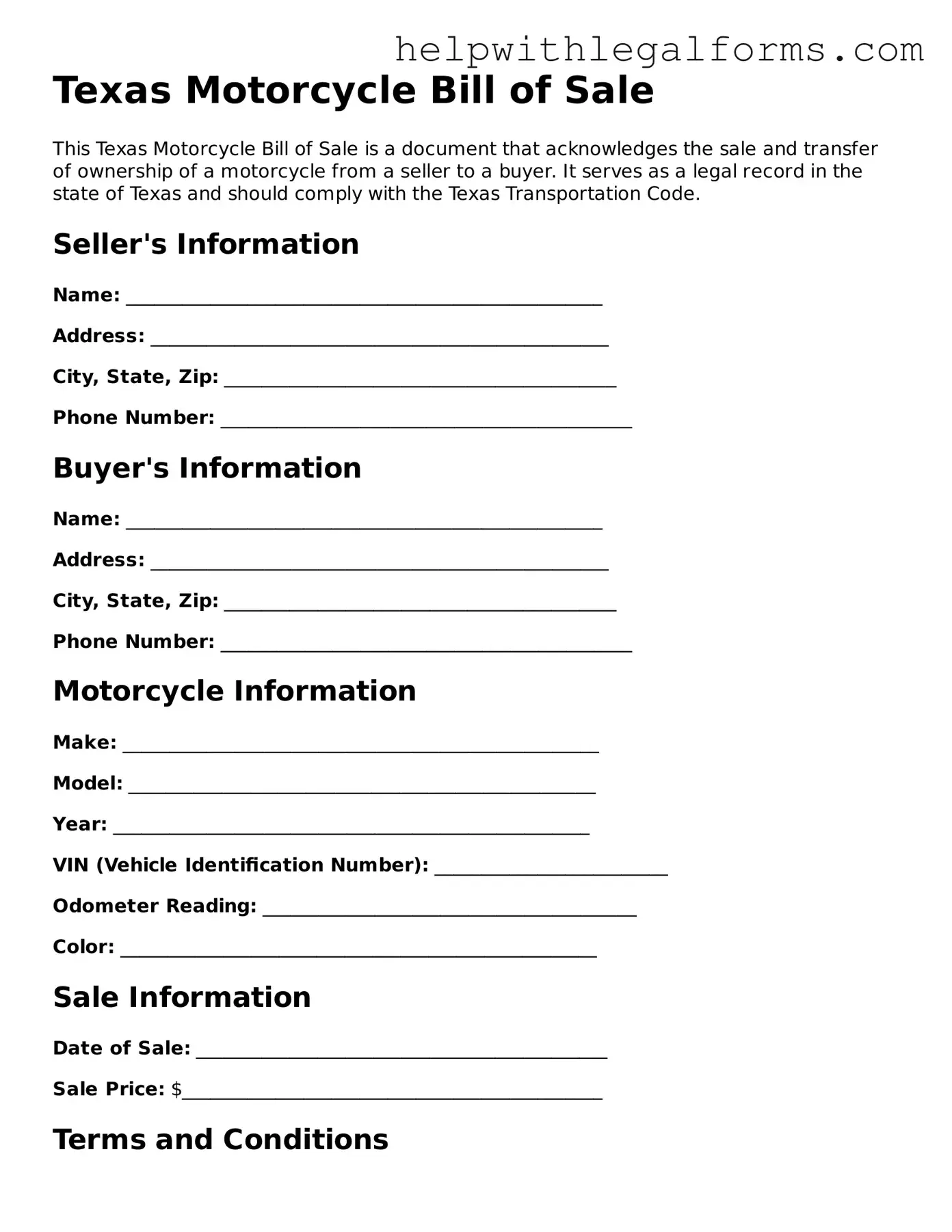Texas Motorcycle Bill of Sale
This Texas Motorcycle Bill of Sale is a document that acknowledges the sale and transfer of ownership of a motorcycle from a seller to a buyer. It serves as a legal record in the state of Texas and should comply with the Texas Transportation Code.
Seller's Information
Name: ___________________________________________________
Address: _________________________________________________
City, State, Zip: __________________________________________
Phone Number: ____________________________________________
Buyer's Information
Name: ___________________________________________________
Address: _________________________________________________
City, State, Zip: __________________________________________
Phone Number: ____________________________________________
Motorcycle Information
Make: ___________________________________________________
Model: __________________________________________________
Year: ___________________________________________________
VIN (Vehicle Identification Number): _________________________
Odometer Reading: ________________________________________
Color: ___________________________________________________
Sale Information
Date of Sale: ____________________________________________
Sale Price: $_____________________________________________
Terms and Conditions
The undersigned seller affirms that the information provided herein is accurate to the best of their knowledge. The seller agrees to transfer the motorcycle's title and ownership to the buyer upon receipt of the sale price. The buyer accepts the motorcycle "as is," assuming all responsibilities for it upon the completion of this transaction.
Signatures
Seller's Signature: _______________________________________ Date: ___________
Buyer's Signature: ________________________________________ Date: ___________
Notary Public (if applicable)
To ensure the authenticity of this document, a notary public may sign below:
Notary's Signature: _______________________________________ Date: ___________
Commission Expiration: ____________________________________
Additional Information (if any)
________________________________________________________________
________________________________________________________________
